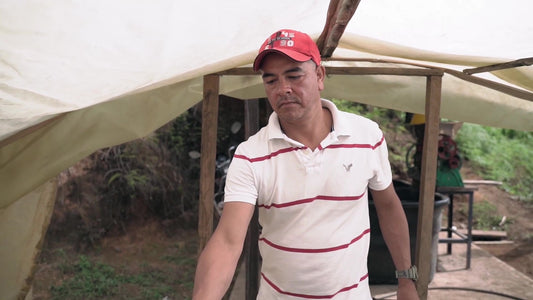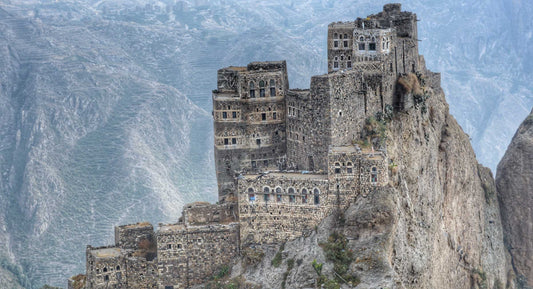Conflict refers to a serious disagreement or argument, typically a protracted one, between individuals, groups, or nations. It can manifest across various dimensions such as personal, communal, national, or international levels, and can be expressed through a range of behaviours from debates and competitive dynamics to armed warfare.
Types of Conflict:
- Personal Conflict: This involves a clash of ideas, beliefs, or personalities between individuals, often resulting from miscommunication, personality differences, or conflicting interests.
- Interpersonal Conflict: This occurs within small groups, like between family members, friends, or coworkers, often due to misunderstandings, misaligned goals, or competition for resources.
- Organizational Conflict: This happens within or between organizations. It can arise from power struggles, structural inequalities, resource allocation, or strategic direction disagreements.
- Community Conflict: Seen in clashes between different community groups which might be based on ethnic, religious, or socio-economic differences. These conflicts can be over local issues such as land use, local government policies, or cultural practices.
- National Conflict: This type involves larger scale conflicts within a country, often between different ethnic or political groups, and can lead to civil wars or significant internal strife.
- International Conflict: This occurs between nations and can be due to territorial disputes, economic competition, cultural clashes, or power imbalances. Such conflicts can escalate into wars and have global repercussions.
Causes of Conflict:
- Resource Scarcity: Competition for limited resources, whether material (like water, land, or oil) or intangible (like power or status), can ignite conflicts.
- Cultural, ideological and Religious Differences: Divergent beliefs and values can lead to misunderstanding and antagonism between groups.
- Political Power Dynamics: The struggle for political power can lead to conflicts, especially in nations with weak governance structures or in authoritarian regimes.
- Economic Disparities: Inequality in wealth and opportunities can fuel dissatisfaction and lead to conflict among different social groups.
- Historical Rivalries: Long-standing historical grievances or rivalries between groups or nations can lay the groundwork for ongoing conflict.
Resolution and Management:
Conflict resolution and management are crucial to preventing escalation and transforming conflicts into positive outcomes. Techniques can include negotiation, mediation, arbitration, diplomacy, and policy changes. Effective conflict resolution involves understanding the underlying causes, engaging all stakeholders constructively, and striving for equitable solutions that address the interests of all parties involved. Understanding conflict in its various forms is essential for developing strategies to manage and resolve it, aiming for societal harmony and cooperative human interaction.
What is Peacebuilding?
Peacebuilding refers to the range of measures implemented to reduce the risk of lapsing or relapsing into conflict by strengthening national capacities at all levels for conflict management, and to lay the foundations for sustainable peace and development. It is a complex, long-term process aimed at creating the necessary conditions for positive and lasting peace by addressing the deep-rooted, structural causes of violent conflict in a comprehensive manner. Peacebuilding activities can be initiated before, during, or after a conflict.
Key Aspects of Peacebuilding Include:
- Institutional Development: Strengthening the institutions necessary for a functioning society, such as legal systems, governments, and local councils that can manage conflict and grievances in a constructive way.
- Economic Reconstruction and Development: Revitalizing an economy devastated by conflict involves rebuilding infrastructure, creating jobs, supporting livelihoods, and integrating into global trade systems. This is essential to reduce poverty and prevent the economic despair that can lead to conflict.
- Social Cohesion and Reconciliation: Efforts to foster reconciliation and rebuild relationships across dividing lines in society. This might involve truth and reconciliation processes, community dialogues, and efforts to address historical grievances.
- Rule of Law and Human Rights: Establishing a legal framework that protects the rights of all citizens and ensures justice can be carried out fairly and transparently. This includes judicial reforms, training law enforcement agencies, and implementing measures to reduce corruption.
- Education and Training: Promoting education reforms and training programs that foster mutual understanding, respect for diversity, and teach skills that support democratic governance and economic development.
- Security Sector Reform: Reforming the military, police, and other security services to ensure they protect rather than threaten the security of the people, and to rebuild trust between security institutions and the public.
Approaches to Peacebuilding:
- Top-Down Approach: This involves engaging high-level leaders in government, military, and major groups to negotiate peace agreements, ceasefires, and new governmental structures.
- Bottom-Up Approach: Engaging local communities and grassroots movements to address local grievances and needs, which can include community development projects, local peace committees, and support for civil society.
Challenges in Peacebuilding:
- Complexity of Conflicts: Each conflict is unique with its own set of historical, cultural, economic, and political complexities, which makes it challenging to find a one-size-fits-all solution.
- Long-term Commitment: Peacebuilding is a long-term process that requires sustained commitment and resources, often far beyond the signing of peace agreements.
- Coordination: Effective peacebuilding requires coordination among a broad range of actors, including international donors, national governments, and local communities, which can be logistically and politically challenging.
- Risk of Renewed Conflict: There is always a risk that peacebuilding efforts might fail and the areas might revert to conflict, especially if the underlying causes of conflict are not fully addressed.
Impact of Peacebuilding:
When successful, peacebuilding can lead to durable peace and sustainable development, reducing the likelihood of a return to conflict. It can help heal divided societies and build a sense of nationhood and shared future among previously warring parties. By addressing the root causes of conflict, peacebuilding lays down the groundwork for long-term peace and prosperity.
Understanding and implementing effective peacebuilding strategies is critical in the modern world, as it not only resolves conflicts but also promotes stability, human development, and well-being in post-conflict societies.
How is Conflict Coffee Defined?
If you’ve ever seen the movie Blood Diamond, you will be aware that natural resources and the conflict over who controls them can exacerbate conflict. Conflict coffee refers to coffee that is produced in regions where the cultivation and sale of coffee beans directly or indirectly fund ongoing conflict or contribute to human rights abuses. These regions are frequently embroiled in violence, where control over valuable resources like coffee can provide financing for armed groups or perpetuate cycles of exploitation and abuse. As a coffee drinker, this might make you nervous about the source of your coffee and whether you are accidentally supporting the continuation of conflict given coffee is often grown in regions that are often affected by conflict. Is the appropriate response to then only buy beans from places where you know there isn’t an active conflict? Well, you could do that but what if that means that coffee farmers who are not active participants in the conflict no longer have a source of income? Are they then more likely to join an armed group or support them indirectly because they no longer have access to legitimate income? It’s complicated and sometimes you have to think through the second and third order effects of your decision. Also, what about if by buying coffee from producers in conflict or post-conflict zones actually is a force for good, providing legitimate livelihood opportunities for communities and former combatants that reinforces stability and peace? There are no easy answers but being aware of the risks associated with conflict coffee can help consumers navigate this tricky area.
Main Characteristics of Conflict Coffee
Conflict coffee is typically characterized by several critical factors:
- Source: It originates from areas known for ongoing or recent conflicts.
- Impact on Local Communities: The trade in conflict coffee often exacerbates violence, leads to human rights violations, and disrupts local communities.
- Economic Influence: Profits from the sale of conflict coffee frequently finance armed groups or corrupt practices, fuelling further conflict.
Regions Where Conflict Coffee is Most Commonly Found
Conflict coffee is predominantly sourced from regions in:
- Africa: Countries like the Democratic Republic of Congo, Ethiopia and Uganda, where internal conflicts have destabilized regions. Examples if countries who have witnessed conflict recently include Rwanda, Burundi, Kenya, Tanzania and Mozambique.
- Latin America: In nations like Colombia, Haiti and Honduras, where coffee production areas overlap with drug trafficking routes and armed conflict zones. Countries like Guatemala, the Dominican Republic, Puerto Rico, Peru and Brazil have also experienced conflict relatively recently.
- Asia: Parts of Southeast Asia, including areas in Vietnam, Indonesia and Myanmar, have seen conflict over control of agricultural lands, including coffee plantations. In the Middle East, Yemen has been living through conflict that significantly affects its coffee producers over many years.
Differentiation from Other Types of Coffee
Conflict coffee differs from conventional coffee primarily because its production and sale are linked with sustaining conflict. In contrast, other types of coffee, such as fair trade or organic coffee, emphasize ethical production practices, sustainable agriculture, and equitable pricing for farmers.
How are Conflict Resources Classified in International Law?
Meaning of Conflict Resources
Conflict resources are natural resources extracted and sold to finance armed conflicts or perpetuate dictatorship regimes. While minerals like diamonds and coltan are often highlighted, agricultural products, including coffee, can also be conflict resources if their trade supports conflict.
Impact on Global Trade
Conflict resources significantly impact global trade by posing ethical challenges and compliance risks for companies. They can lead to international sanctions and create volatility in global markets.
International Agreements Regulating the Trade of Conflict Resources
The most notable agreement is the Kimberley Process, which specifically targets the trade in conflict diamonds. Moreover, the OECD Due Diligence Guidance provides guidelines for companies to ensure that their supply chains are free from conflict resources.
Contribution of Conflict Resources to Wars or Conflicts
The revenue from conflict resources often finances armed groups, enabling them to purchase weaponry and sustain their operations, thus prolonging conflicts and undermining peace efforts.
Examples of Conflict Resources
Minerals Considered Conflict Resources
Key conflict minerals include:
- Diamonds: Often called blood diamonds when mined in war zones.
- Coltan: Used in electronics and sourced primarily from conflict-ridden regions like the DRC.
- Gold: Frequently mined under conditions that finance conflicts, especially in Africa.
Agricultural Products as Conflict Resources
Besides minerals, agricultural commodities like cocoa, palm oil, and coffee can become conflict resources if their cultivation and trade support conflict economies.
Specific Conflict Resources Linked to Major Global Conflicts
Conflict resources like oil in the Middle East and coltan in the DRC have been directly linked to ongoing conflicts and have had profound effects on global politics and economics.
Origins of Conflict Resources and Local Economies
The extraction and trade of conflict resources often devastate local economies. While they provide substantial revenue, this money frequently supports corrupt regimes or armed groups rather than benefiting the local population.
Why is Coffee a Conflict Resource?
Conditions Making Coffee a Conflict Resource
Coffee becomes a conflict resource primarily in regions where its trade finances armed groups or in areas where the struggle for control over its production leads to violence and exploitation.
Demand's Contribution to Coffee’s Status as a Conflict Resource
The high global demand for coffee, especially premium varieties, can exacerbate its status as a conflict resource. This demand incentivizes control over lucrative coffee-producing areas, often leading to conflict and exploitation.
Specific Countries Where Coffee is Considered a Conflict Resource
Countries such as Colombia, where past conflicts have been financed through the coffee trade, and the Democratic Republic of Congo, where control over agricultural resources has fuelled regional conflicts, are notable examples.
Global Market’s Role in Coffee Being Categorized as a Conflict Resource
The global coffee market, driven by high consumer demand in developed nations, plays a significant role in coffee being categorized as a conflict resource. This market pressure often leads to exploitation and conflict in producing regions.
How are Coffee Farmers Affected by Conflict?
Direct Impacts of Conflict on Coffee Farmers
Farmers in conflict zones may face violence, extortion, forced recruitment, or displacement, which can disrupt their ability to cultivate and harvest coffee. Stories from the farmers behind our Inza Cauca coffee from Colombia tell of how the FARC group used to extort farmers and take over agricultural land to grow narcotics, which were used to finance their war with government forces. Also, the mountainous terrain was used by rebels to hide from the military, drawing the conflict into the farmland that was used by farmers making it difficult to maintain their livelihoods. Fortunately, since the peace deal in 2016 the region has seen great progress and economic development as farmers have been able to access international markets without worrying about being stuck in the middle of an ongoing war.
Influence of Conflict on Coffee Production and Quality
Conflict can severely impact the quality and quantity of coffee production. It disrupts farming practices, destroys infrastructure, and limits access to markets. When farmers cannot get to their farms or their crops or wash stations are destroyed because there is an active conflict in the area, inevitably the quality of the coffee will be impacted. Fortunately coffee requires quite basic infrastructure so can bounce back from the disruption caused by conflict quite quickly if peace breaks out.
Economic Consequences for Coffee Farmers in Conflict Zones
Farmers in conflict zones often receive lower profits due to disrupted production, increased costs related to security, and reduced access to fair markets. A good example of this is Ethiopia where some importers decided to not purchase Ethiopian coffee due to concerns about how it could fuel the conflict. Indirect impacts such as recent risks to shipping in the Red Sea as a result of regional conflict have also impacted coffee supply chain, driving prices up for producers and importers alike.
Measures to Protect Coffee Farmers in Areas of Conflict
Initiatives such as Fair Trade certification aim to ensure that farmers receive fair compensation and are protected from the worst abuses associated with conflict resources. Direct trade with specific coffee producers, when done transparently, can also have a huge impact on supporting coffee farmers impacted by conflict.
Influence of International Companies and Consumers
International companies and consumers have a significant impact on conditions for coffee farmers in conflict areas through their purchasing decisions. By choosing ethically sourced coffee, they can discourage the trade in conflict resources.
Can Coffee Help to Bring About Peace?
When managed ethically, coffee cultivation can provide a stable income for communities and reduce the incentives for involvement in conflict, potentially leading to peace and economic stability in previously conflict-ridden areas.
This comprehensive examination of conflict coffee and conflict resources reveals the deep interconnections between global trade, local conflicts, and the ethical responsibilities of consumers and companies in the developed world. By understanding and addressing these issues, it is possible to mitigate some of the worst impacts of conflict resources and improve the lives of those living in affected regions.




